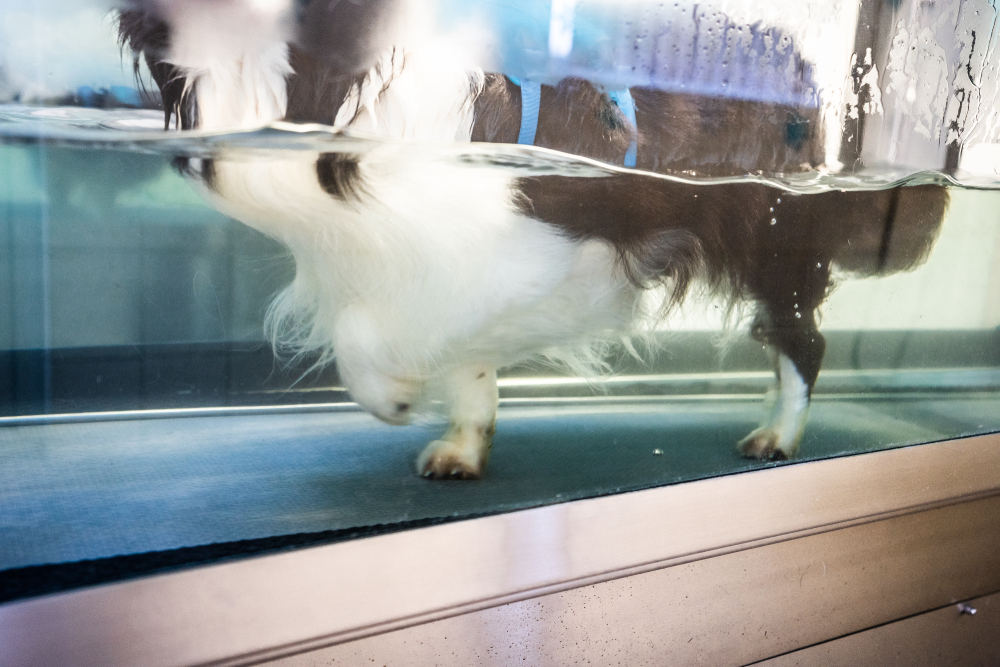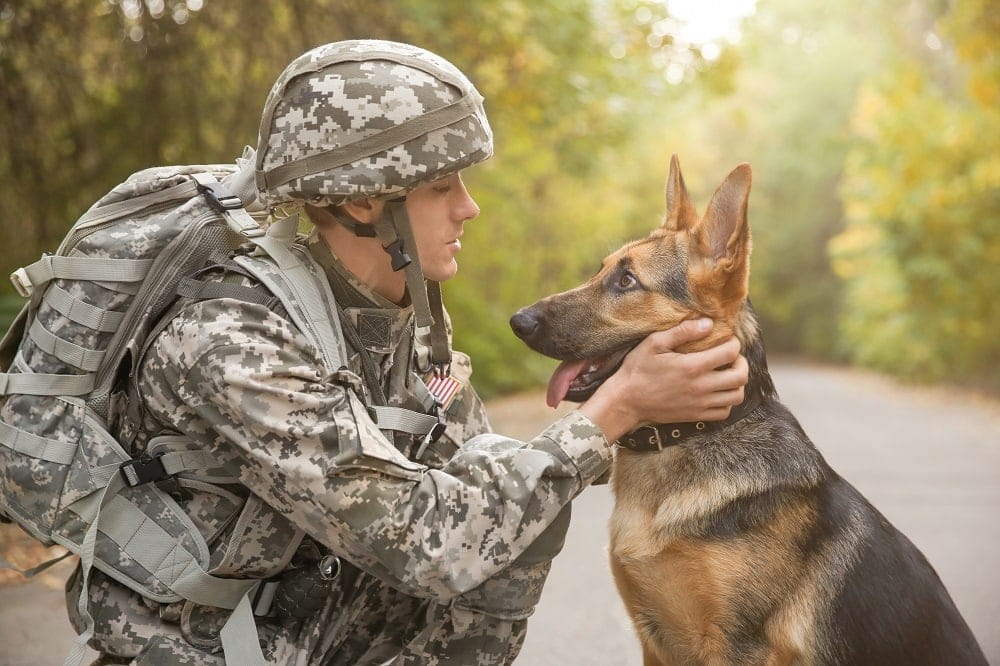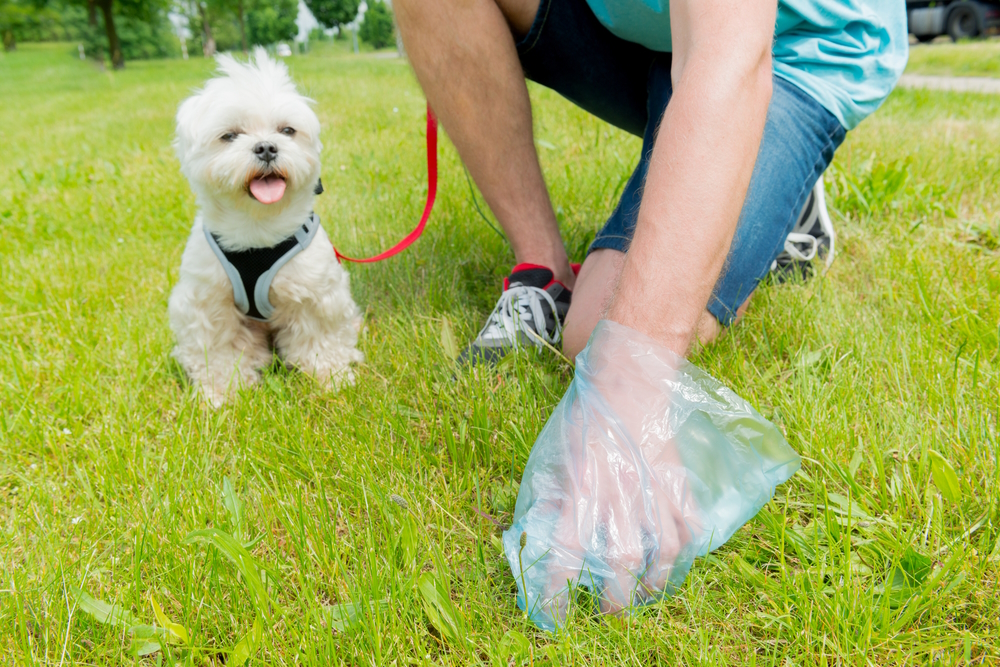Click to Skip Ahead
As dogs grow older, develop health problems, and suffer injuries, finding fitting ways to keep them in shape becomes more and more challenging. Physical rehabilitation is the gold standard after many injuries and surgical procedures and, for dogs with chronic mobility problems, they need a low-impact form of exercise.
As backyard play and daily walks add stress and wear to the body, owners need unique alternatives to provide the benefits of a good workout without the drawbacks. For many, hydrotherapy (or aquatic therapy) is the answer.
It utilizes the gentle pressure and support water provides and gives trainers and therapists a safe and effective modality to help virtually any dog, regardless of age, size, or mobility issues. Let’s explore what hydrotherapy is for dogs and how it can work for your pet.
How Does It Work?
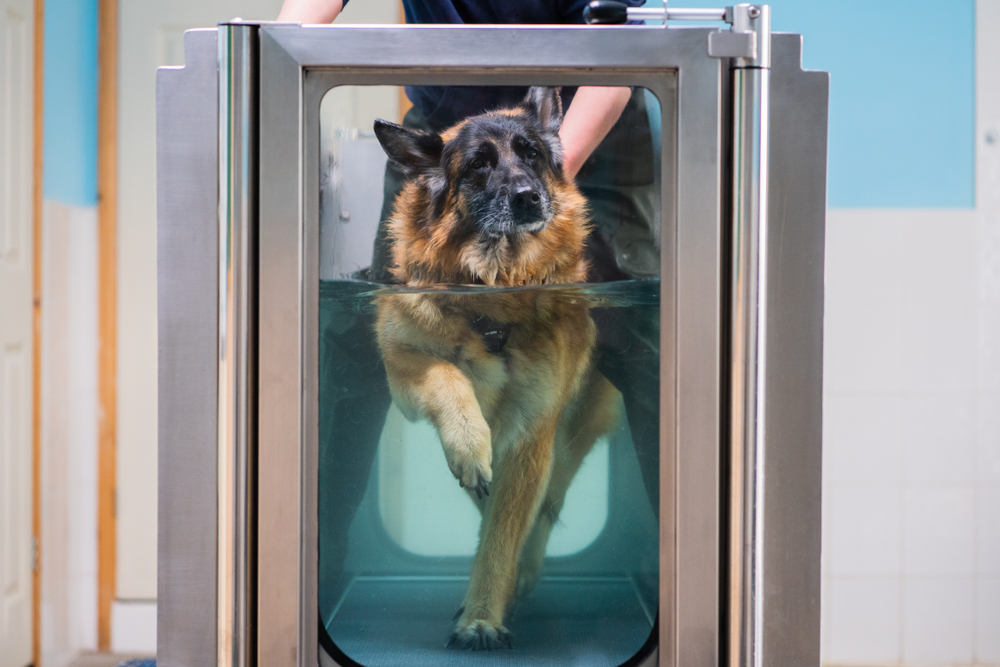
Hydrotherapy (meaning “water healing”) has existed since ancient times, but only recently gained attention for use with dogs. As more owners and experts see its unique benefits, its popularity has increased. Canine hydrotherapy primarily involves swimming or underwater treadmills as part of a rehab or conditioning program in a reduced weight-bearing setting.
Dogs are under supervision and equipped with life jackets as needed. The practice improves their range of motion and reduces joint pain and pressure through the essential qualities of water, including:
- Buoyancy: Water lifts less dense bodies upward, putting less downward force on your dog’s limbs to facilitate movement
- Hydrostatic pressure: Water pressure applies to all body surfaces equally
- Resistance: Gentle resistance against the body works out the muscles more efficiently than moving on land, building muscle mass and improving endurance
- Viscosity: Cohesion between water molecules makes them want to stick together, creating friction to resist movement
- Specific gravity and relative density: Adjusting the ratio of water to the dog’s weight lets therapists manipulate buoyancy and resistance
- Temperature: Cold water can help rigorous exercisers maintain a lower body temperature; warm water can relax tight muscles, increase joint flexibility, stimulate blood flow, and relieve pain and inflammation
The dog’s body type will determine how these qualities affect the workout. For instance, some dogs have longer, thicker coats or bigger bodies. The increased drag requires more effort, making the exercise more strenuous, if the water level is low, whilst a high water level increases the buoyancy.
Therapists acquire as much information about the dog’s health problems, age, breed, size, injuries, and temperament. Then, they can develop an appropriate hydrotherapy strategy addressing their needs and capabilities.
What Are the Different Types of Hydrotherapy for Dogs?
The most common forms of hydrotherapy involve pools or walking on underwater treadmills. Dog owners can even give their dogs a fun water workout with at-home pools or by going to the beach.
Therapists generally require referrals from veterinarians for rehabilitation and other medical uses for hydrotherapy. Talking with your vet about available opportunities in the area and whether your dog will be a good candidate is the best way to find a qualified professional to meet their needs.
1. Swimming
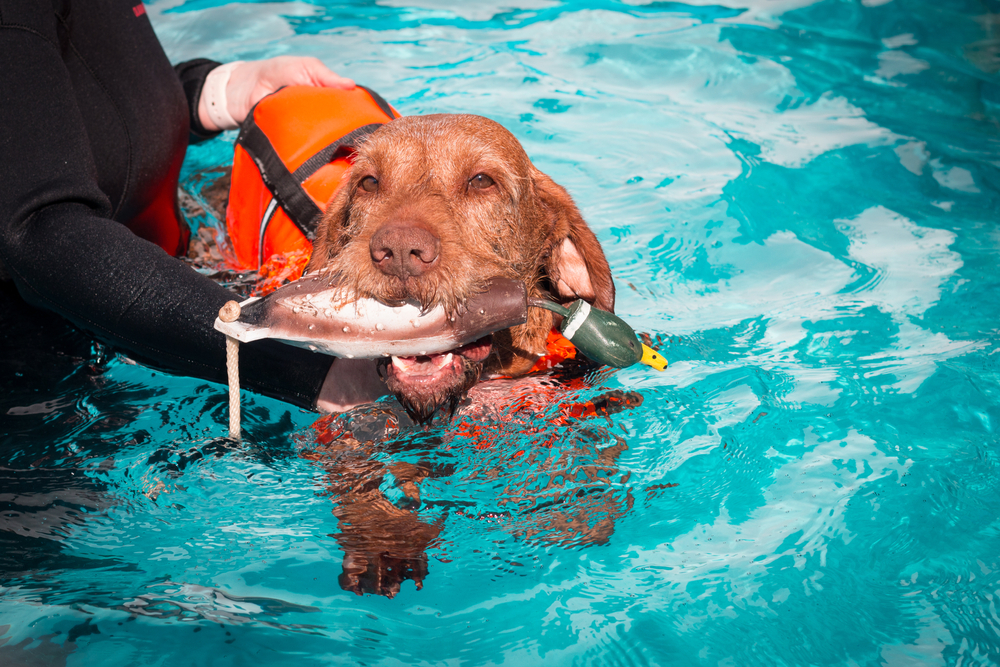
Swimming is an excellent cardio workout, improving your dog’s heart function and circulation while burning calories. With no weight bearing down on the limbs and joints, dogs enjoy a fuller range of motion to work out their core and leg muscles without risking injury.
While doing a few laps is always beneficial, therapists can add engaging elements by playing fetch and other games. Though pools aren’t as flexible as an underwater treadmill, changes in water temperature and pool jets can enhance muscle relaxation benefits and increase resistance.
2. Underwater Treadmill
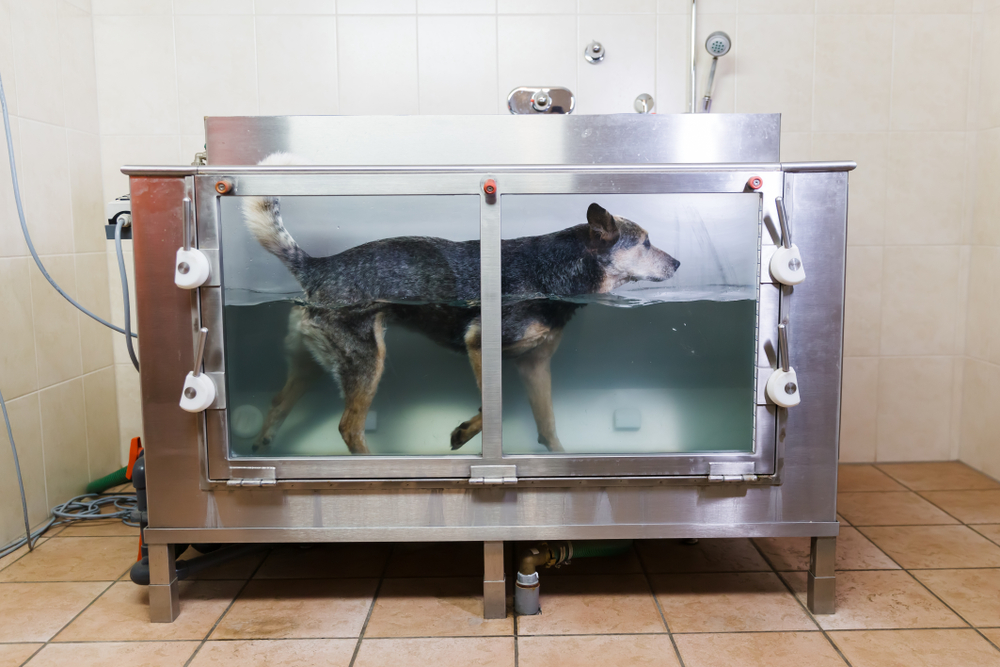
The underwater treadmill is a popular hydrotherapy for dogs suffering from physiological disorders. Unlike swimming, the treadmill harnesses the dog in place and keeps their legs on the ground, which puts them in a less stressful situation if they aren’t expert swimmers. The treadmill sits in a high-walled tank that fills with water to the necessary height.
Therapists have much more control in customizing a routine with an underwater treadmill. Some of the variables they can affect include:
- Speed: The treadmill can run at any speed to suit the dog’s tolerances and the hydrotherapy goals
- Direction: Backward walking engages different muscle groups
- Water level: Raising and lowering water levels allows dogs of all sizes to use a treadmill and lets therapists create the perfect level of resistance
- Angle: Uphill and downhill angles can stretch and exercise different body parts
The underwater treadmill is a beneficial postoperative therapy. The ease on the joints paired with the controlled walking motion helps dogs re-establish the proper gait and build muscle. The treadmill can also improve proprioception because making contact helps dogs regain balance and coordination as they recover from spinal issues.
3. Baths
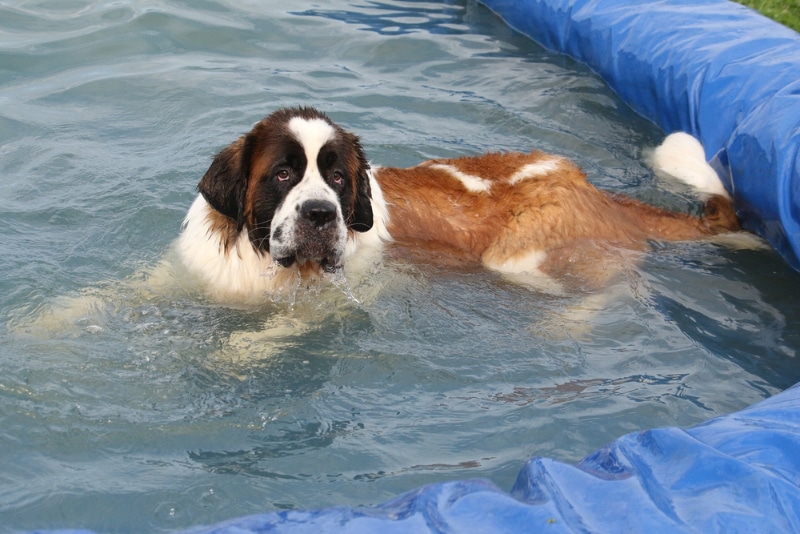
While this is not used by veterinary and rehabilitation professionals, bathing your dog in warm water can probably provide the same muscle relaxing and pain relieving effects that it does in humans, and could be considered a form of hydrotherapy. The gentle bubbling of a whirlpool tub massages the body for further muscle relaxation.
Where Is It Used?
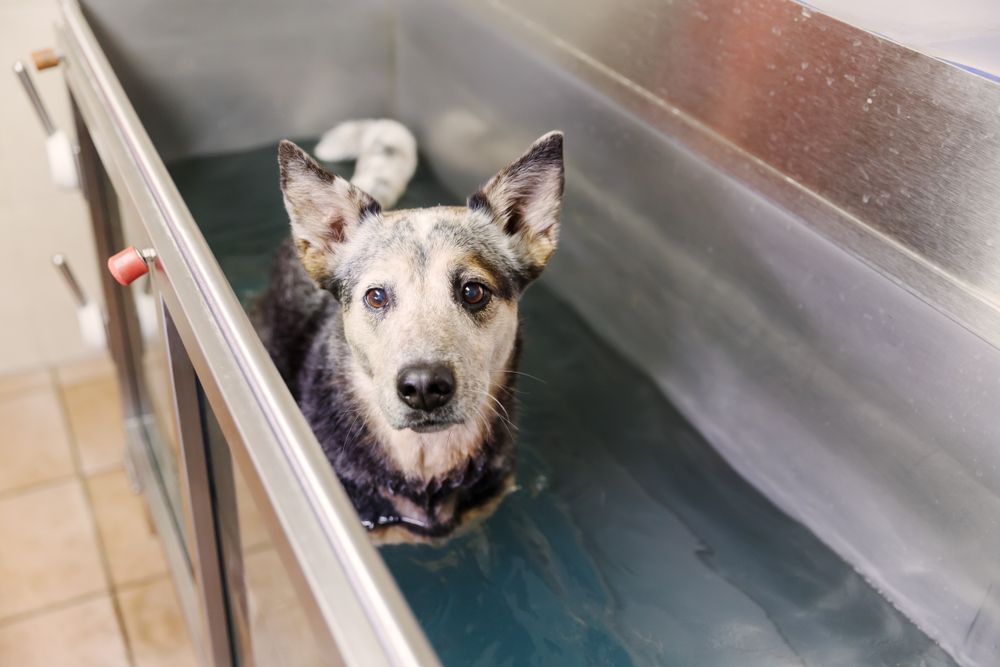
Hydrotherapy is a beneficial pre-operative and recovery option for dogs with orthopedic and neurologic disorders. Therapists use it with other methods to help dogs coming off of surgical operations for common issues, including:
- Cranial cruciate ligament ruptures
- Hip dysplasia
- Elbow dysplasia
- Spinal injuries
- Luxating patella
The gentle pressure of water against the joints can also help older dogs ease the discomfort of osteoarthritis and maintain fitness to prevent muscle atrophy. Obese dogs similarly benefit from the added support water provides to relieve stress on the joints. They can improve their routine to lose weight while decreasing the risk of injury.
Healthy dogs can also benefit from hydrotherapy. As part of a physical conditioning routine for highly active dogs and competitive athletes, it can provide low-impact strength and endurance work to minimize wear on the body.
Advantages of Canine Hydrotherapy
Hydrotherapy empowers dogs suffering from orthopedic issues or recovering from surgeries to rebuild their strength and stamina through the body weight support and pressure distribution water provides. Its many benefits include:
- Improving range of motion
- Building muscle mass and nerve endings
- Improving heart function
- Increasing circulation
- Relieving pain and inflammation
- Reducing edema and fluid pooling
- Controlling weight
- Correcting gait and posture
- Minimizing impact on bones and joints
- Mentally stimulating your dog
By making exercise gentler on the body, therapists can engage dogs in rehabilitative treatments earlier to expedite recovery. Dogs can regain their footing and their confidence. With the extra resistance in the water, dogs also enjoy a more efficient workout than walking on land.
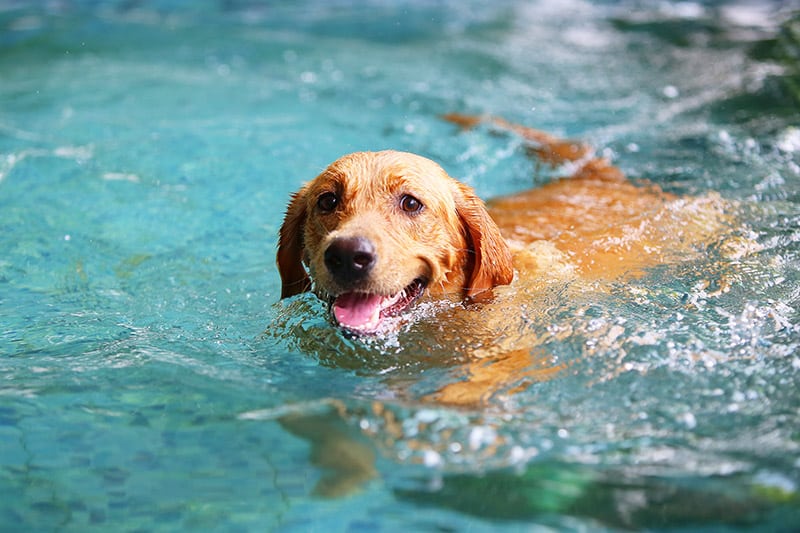
Disadvantages of Canine Hydrotherapy
Hydrotherapy isn’t appropriate for all dogs. Even if they have a condition indicating its use, dogs may have behavioral issues preventing it. Some dogs can’t swim or have an aversion to water. Others have physical problems that don’t mix with hydrotherapy, such as:
- Open wounds
- Skin or ear infections
- UTIs
- Diarrhea or vomiting
- Epilepsy
- Respiratory conditions
Dogs also face a few unique risks with aquatic therapy. If water regularly gets in their ears, ear infections can become ongoing issues. Uncontrolled swimming can also fatigue, stress or overexcite dogs, putting them at risk of injuries or drowning. If commenced too soon after surgery, there may be an increased risk of postoperative complications. If it causes anxiety, hydrotherapy becomes counterproductive to treatment.
Frequently Asked Questions (FAQ)
How Can I Use Hydrotherapy for My Dog at Home?
Although hydrotherapy for treating injuries and illnesses should occur through your vet and rehab specialists, using it for conditioning and exercising a healthy dog is something you can do at home. Always consult your vet before doing hydrotherapy. They can assess your dog’s ability, health, and temperament to tell you whether it would be practical.
The recommended pool size will vary depending on your dog’s build. Miniature and toy dogs are the easiest to accommodate. A kiddie pool or bathroom tub can provide a suitable swimming space. Or you can even create a DIY submerged run to give your dog extra support and resistance while walking. Depending on your dog’s skill level and needs, you may need equipment like:
- Floatation devices
- Harnesses
- Heaters
- Jets
- Access ramps or stairs
Sessions should be only 2–5 minutes to start to let your dog get acclimated to the water. As they get used to it, the sessions can increase to 10–20 minutes or more.
How Often Should a Dog Do Hydrotherapy?
The dog’s frequency of hydrotherapy depends on the vet’s recommendations. It’s only one part of a comprehensive rehab program. Dogs will typically do 2–3 sessions weekly for several weeks. As they show improvement, they may drop to only one weekly session.
Can Insurance Cover My Dog’s Aquatic Therapy?
Pet insurance may cover your dog’s hydrotherapy. You’ll have to investigate your plan’s unique terms and benefits to see how they handle alternative therapies. Fortunately, hydrotherapy isn’t experimental and requires a vet referral.
Comprehensive coverage plans often include it under their covered services, while others may make it an option. With insurance, you’ll usually pay for the services up-front, and your provider will reimburse the agreed percentage of costs upon approval.
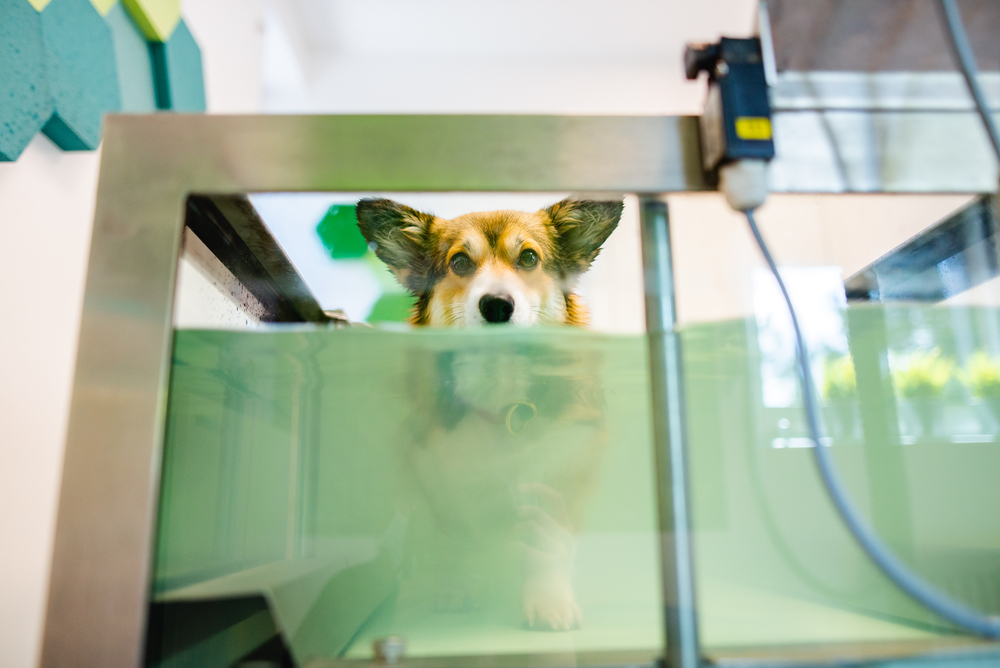
Conclusion
Is hydrotherapy a practical fit for your dog? If your dog isn’t afraid of swimming or water, hydrotherapy is an excellent option to consider. As more owners discover the value of rehabbing their pets, more services are becoming available. You can talk to your vet about your pet’s needs and fitness goals to see how you can utilize hydrotherapy and give them all the benefits of this low-impact workout opportunity.
Featured Image Credit: L.A.Kennedy, Shutterstock

